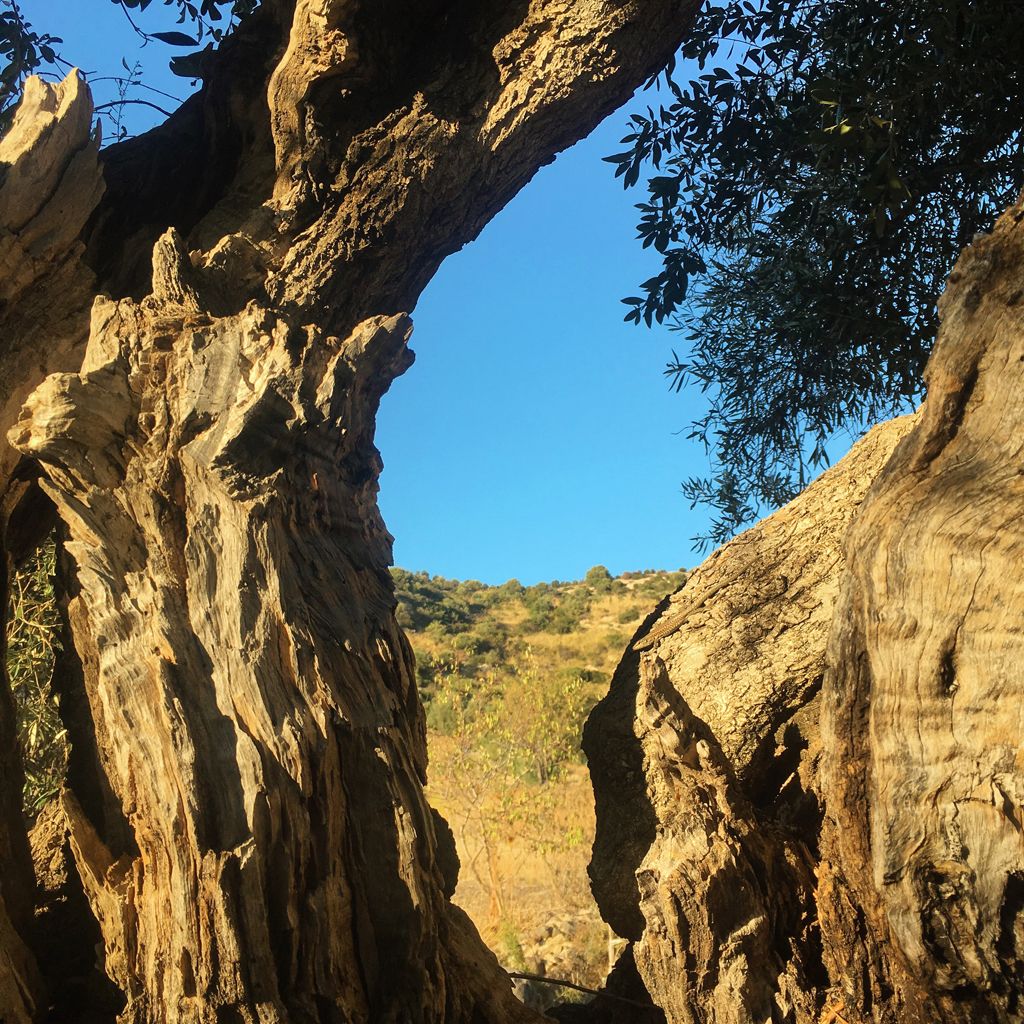
316/377: Genuri
INSPIRATION

In recent weeks, I have been on the Giara di Gesturi several times, from Genoni and Gonnosnò on the summit, while from Nuragus, Assolo, Albagiara and Sini on its slopes. Today I am determined to get on the top by bike.
Once I have traveled the short way from Sini, I settle in the b&b Villa Laura, leave my luggage and get ready for my solitary trip!
After verifying on Google Maps that there is a road that climbs the Giara from Genuri, I set off towards the countryside at the exit of the village, passing a series of very extensive almond groves full of fruit.
The bike is unloaded and I pedal slowly and happily, along the road that crosses the yellow sides of the Giara, on a beautiful sunny day, enjoying the glorious panorama that becomes more and more extensive as I climb in altitude.

Once on the top I am no longer in the territory of Genuri, but it does not matter, many other times I have crossed over. The sun is getting higher and it’s very hot for a mid-October day. I wander around the country road for a while hoping to spot some Giara horses, but in this heat I can’t see any, probably they’re all in the shade of some tree or bush.
I made sandwiches for lunch, but finding a place in the shade is very difficult, the vegetation is dense and very low. I proceed to a small clearing where I see a tree, the only one in my field of vision. I park my bike underneath and lean on it, sitting down and devouring mortadella sandwiches at the speed of light.
After a bit of relaxation, I continue the tour on the plateau and set off to retrace the same road downhill from the outward journey. If it took me perhaps almost an hour to go up, it takes me five minutes to find myself at the entrance to the village!

In the afternoon, I meet the Mayor Danilo who guides me through some places of interest. First of all, the Nuraghe San Marco at the exit of the village, next to the homonymous country church. The site is closed, but Danilo lets me in to admire the remains of this impressive structure, unfortunately very low as most of the boulders have been removed. But from what remains, a central tower surrounded by a courtyard, a fence and three side towers, we understand its importance.

We then walk along a road that goes around the town, the road that the wagons traveled to go towards the Giara, with many multi-centenary olive trees, of which this territory is very rich, as I also saw yesterday in Sini.
We arrive at the small church of San Domino, on the other side of the village, with an ancient square facade of light and dark stones, and a double bell gable. Not far away is the parish church of Santa Maria di Monserrato, from the late sixteenth century, but which has undergone various restorations, with a beautiful dome.
Back at the b&b I rest after the long and sunny day but unfortunately, as already happened on June 3, almost to crown this very long hot summer, the sun silently beat too long on my head and during the night, trembling with fever and headache, I realise I have had a sunstroke, which will force me to stay in bed for a whole day. I will have to make up for the lost day by dedicating half a day to the next two villages.
SOUND FRAGMENTS

SARDINIAN SHORT STORIES

At the end of the evening tour, Mayor Danilo takes me to the Museum of Oil and Peasant Art, in a beautiful renovated Campidanese house. Genuri, like other towns in Marmilla, is also part of the National Association of Oil Cities.
To combat the phenomenon of depopulation, which is widespread in Marmilla, the municipal administration has undertaken various actions including the agro-environmental experimental project Genuri in Campagna (Genuri in the countryside).
One of the intervention measures of the project concerned the protection and enhancement of almost a thousand centuries-old olive trees, some of which I was able to admire today in the municipal countryside. A work and study group has produced the “Manual of pruning and enhancement of centuries-old olive trees”.

But the project had as a further objective the economic enhancement of the agricultural production of the area, in particular of extra virgin olive oil. To overcome the difficulties of packaging and promotion of each product by individual companies, it was decided to register a “municipal” trademark that could be used by all the individual companies.
Thus was born the Jauni’s – Land of centuries-old brand and the logo and a label were designed to be glued on the bottles. These, in addition to being the classic 250 ml, are also produced in single doses of 10 ml in a characteristic box suitable for the catering department. Inside the box there is also a brochure with information on the history of the area, on archaeological sites and places of interest, as well as on events and festivals of the Municipality of Genuri.
The oil with the Jauni’s brand is also used by Sardinian restaurants “on the continent” and is an example of how the synergy between municipal administrations, local farms and restaurateurs can be useful to enhance their agricultural products and create a tourist-environmental interest towards a particular territory.